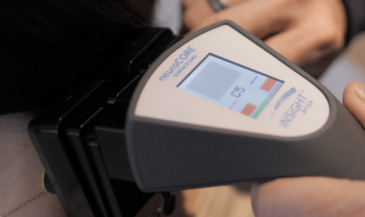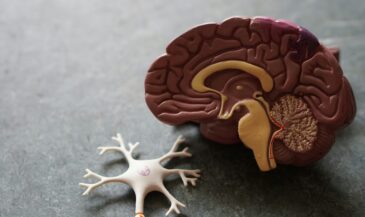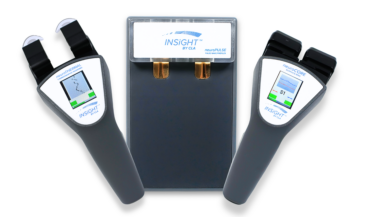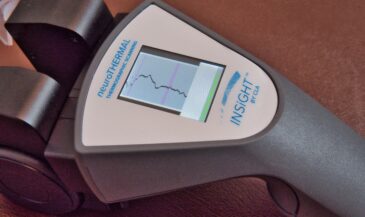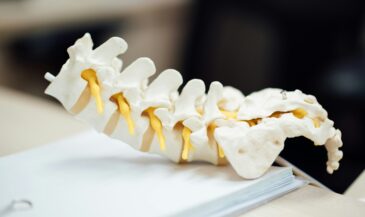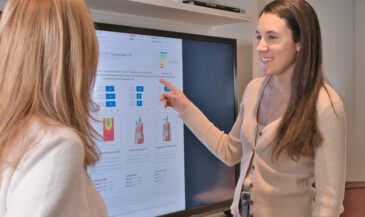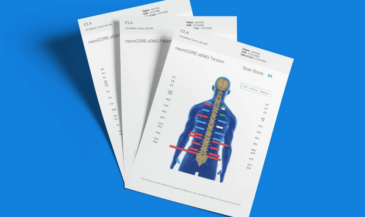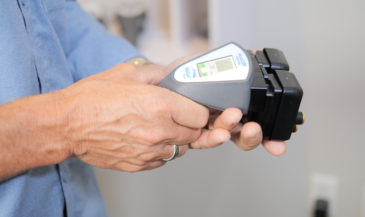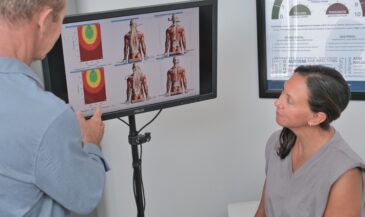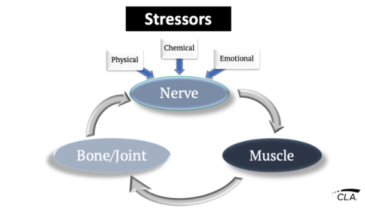In both Canada and the United Stares, reports have appeared in the popular media suggesting that chiropractic “manipulation” of the cervical spine is associated with strokes. Some writers have suggested that such procedures be banned. These allegations require a swift and vigorous response.
In his book, “Galileo’s Revenge,” attorney Peter Huber describes “junk science” as “A hodgepodge of biased data, spurious inference, and logical legerdemain…It is a catalog of every conceivable kind of error: data dredging, wishful thinking, truculent dogmatism, and, now and again, outright fraud.” (1)
An excellent example of “junk science” is the popular notion that chiropractic adjustments cause strokes. Although individual case reports of adverse events following “manipulation” have been reported in the medical literature for decades, recent exposés in the popular media seem to have led some individuals to accept this premise at face value. Careful examination will reveal that these individuals have fallen prey to a classic case of “junk science.”
A common error in logic is equating correlation with cause and effect. The fact that a temporal relationship exists between two events does not mean that one caused the other. As Keating (2) explained, “To mistake temporal contiguity of two phenomena for causation is a classic fallacy of reasoning known as ‘post hoc, ergo propter hoc,’ from the Latin meaning ‘after this, therefore caused by this.’”
Consider the application of this fallacy in the case of chiropractic adjustments and strokes. Lee (3) attempted to obtain an estimate of how often practicing neurologists in California encountered unexpected strokes, myelopathies, or radiculopathies following “chiropractic manipulation.” Neurologists were asked the number of patients evaluated over the preceding two years who suffered a neurologic complication within 24 hours of receiving a “chiropractic manipulation.” Fifty-five strokes were reported. The author stated, “Patients, physicians, and chiropractors should be aware of the risk of neurologic complications associated with chiropractic manipulation.”
What’s wrong with this? Let’s change “neurologic complications” to “automobile accidents.” Would it be reasonable to suggest that if 55 patients over the last two years had car accidents within 24 hours of seeing a chiropractor that the D.C. caused the accidents? Want to see how absurd this can get? Change “neurologic complications” to ice cream consumption. Or sleep.
Some neurologists are suggesting that the history of stroke patients include a question concerning whether the patient had received chiropractic care. Others claim that a “manipulation” administered weeks prior to a stroke may have caused the event.
Is there anything that would either strengthen or weaken a case of alleged causality? Yes. If we have reliable reporting, we can compare the number of times the event in question (in this case, stroke) occurs as a random event to the number of times the event occurs following the putative causative event (in this case, a “chiropractic manipulation”). In a letter to the editor of JMPT, Myler (4) posed an interesting question: “I was curious how the risk of fatal stroke after cervical manipulation, placed at 0.00025% compared with the risk of (fatal) stroke in the general population of the United States.” According to data obtained from the National Center for Health Statistics, the mortality rate from stroke was calculated to be 0.00057% If Myler’s data is accurate, the risk of death from stroke after cervical manipulation is less than half the risk of fatal stroke in the general population!
But is Myler’s data accurate? His 0.00025% figure is from a paper by Dabbs and Lauretti (5). Their estimate is probably as good as any, since the basis for it was a reasonably comprehensive review of literature. Yet, there is potentially conflicting information which must be considered. Jaskoviak (6) reported that not a single case of vertebral artery stroke occurred in approximately five million cervical “manipulations” at The National College of Chiropractic Clinic from 1965 to 1980. Not one. Osteopathic authors Vick et al (7) reported that from 1923 to 1993, there were only 185 reports of injury out of “several hundred million treatments.”
All of the figures which I found concerning stroke following “manipulation” involve estimates, not hard data. In the “Back Letter,” (8) it was wisely observed that, “In scientific terms, all these figures are rough guesses at best…There is currently no accurate data on the total number of cervical manipulations performed every year or the total number of complications. Both figures would be necessary to arrive at an accurate estimate. In addition, none of the studies in the medical literature adequately control for other risk factors and co-morbidities.”
Furthermore, Leboeuf-Yde et al (9) suggested that there may be an over- reporting of “spinal manipulative therapy” related injuries. The authors reported cases involving two fatal strokes, a heart attack, a bleeding basilar aneurysm, paresis of an arm and a leg, and cauda equina syndrome which occurred in individuals who were considering chiropractic care, yet because of chance, did not receive it. Had these events been temporally related to a chiropractic office visit, it is likely that they would have been inappropriately attributed to the chiropractic care.
Another concern is the application of the term “chiropractor” or “chiropractic” to strokes which did not involve doctors of chiropractic. There are many cases of strokes attributed to chiropractic care where the “operator” was not a chiropractor at all. Terrett (10) observed that “manipulations” administered by a Kung Fu practitioner, GPs, osteopaths, physiotherapists, a wife, a blind masseur, and an Indian barber were incorrectly attributed to chiropractors. As Terrett wrote, “The words chiropractic and chiropractor have been incorrectly used in numerous publications dealing with SMT injury by medical authors, respected medical journals and medical organizations. In many cases, this is not accidental; the authors had access to original reports that identified the practitioner involved as a non-chiropractor. The true incidence of such reporting cannot be determined. Such reporting adversely affects the reader’s opinion of chiropractic and chiropractors.”
A common error made in these reports is failure to differentiate “cervical manipulation” from specific chiropractic adjustment. They’re simply not the same. Many chiropractic techniques (upper cervical toggle, Activator, Logan basic, Torque release, etc) do not involve taking a joint to tension, applying a thrust, and producing cavitation. Klougart et al (11) published risk estimates which reveal differences depending upon the type of technique used by the chiropractor.
After careful review of the available evidence, the Council on Chiropractic Practice concluded, “The panel found no competent evidence that specific chiropractic adjustments cause strokes.” (12)
This conclusion begs the question, “What about screening tests to identify patients at risk?” After examining 12 patients with dizziness reproduced by extension-rotation and 20 healthy controls with Doppler ultrasound of the vertebral arteries, Cote et al (13) concluded, “We were unable to demonstrate that the extension-rotation test is a valid clinical screening procedure to detect decreased blood flow in the vertebral artery. The value of this test for screening patients at risk of stroke after cervical manipulation is questionable.” Terrett (14) noted “There is also no evidence which suggests that positive tests have any correlation to future VBS (vertebrobasilar stroke) and SMT (spinal manipulative therapy)”.
The illusory concept of chiropractic “manipulation” and stroke should be considered in the context of the de facto standard for health care safety — allopathic medicine.
In a review of errors in medicine, Leape (15) reported that if the results of the papers reviewed were applied to the U.S. as a whole, “180,000 die each year partly as a result of iatrogenic injury, the equivalent of three jumbo-jet crashes every 2 days.
It was reported that drug-related “problems” each year cost as much as $182 billion, kill as many as 198,815 people, put 8.8 million in hospitals, and account for up to 28% of all hospital admissions. (16) Adverse drug events in hospitalized patients nearly doubles the risk of death. (17) It is important to realize that these reports deal with iatrogenic events, which do not necessarily involve negligence on the part of the physician.
What about physician negligence? How widespread is the problem? Lesar et al (18) observed that adverse drug events occur in up to 6.5% of hospitalized patients. The causes? “A large number of errors appeared to result from a lack of knowledge…as well as apparent mental lapses and mental slips.” In another study, adverse drug events were found to add an average of 4.6 days to the length of stay in the hospital, at an average cost of $5,857. (19)
The consumer magazine Public Citizen reported on the results of a Harvard study. It was concluded that medical malpractice is the third leading cause of preventable death in the United States, ahead of traffic fatalities and firearms deaths. Only cigarette smoking and alcohol lead medical malpractice. The authors estimated that medical malpractice is responsible for 80,000 deaths per year, one every seven minutes. (20)
Even apparently innocuous diagnostic procedures can be lethal. Myocardial infarction occurs in 1 out of 2,800 persons undergoing treadmill exercise testing. One out of 20,000 individuals will die as a result of treadmill exercise testing. (21) Those with suspicious results may undergo cardiac angiography, a procedure with a mortality rate of 0.10% to 0.25%. This translates to 1 in 1,000 to 1 in 250. (22).
Despite this, attorneys continue to file stroke-related lawsuits against chiropractors, and muckrakers masquerading as journalists stir the emotions of the populace. It is time to replace yellow journalism with scientific investigation. Chiropractors should respond swiftly and vigorously to these allegations.
References
1. Huber PW: “Galileo’s Revenge. Junk Science in the Courtroom.” Basic Books. 1991. Page 3.
2. Keating JC Jr: “Toward a Philosophy of the Science of Chiropractic.” Stockton Foundation for Chiropractic Research, 1992. Page 189.
3. Lee K: “Neurologic complications following chiropractic manipulation: a survey of California neurologists.” Neurology 1995;45:1213.
4. Myler L: Letter to the editor. JMPT 1996;19:357.
5. Dabbs V, Lauretti WJ: “A risk assessment of cervical manipulation vs. NSAIDS for the treatment of neck pain.” JMPT 1995;18:530.
6. Jaskoviac P: “Complications arising from manipulation of the cervical spine.” JMPT 1980;3:213.
7. Vick D, McKay C, Zengerle C: “The safety of manipulative treatment: review of the literature from 1925 to 1993.” JAOA 1996;96:113.
8. “What about serious complications of cervical manipulation?” The Back Letter 1996;11:115.
9. Leboeuf-Yde C, Rasmussen LR, Klougart N: “The risk of over- reporting spinal manipulative therapy-induced injuries: a description of some cases that failed to burden the statistics.” JMPT 1996;19:536.
10. Terrett AGJ: “Misuse of the literature by medical authors in discussing spinal manipulative therapy injury.” JMPT 1995;18:203.
11. Klougart N, Leboeuf-Yde C, Rasmussen LR: “Safety in chiropractic practice, Part I; The occurrence of cerebrovascular accidents after manipulation to the neck in Denmark from 1978-1988.” JMPT 1996;19:371.
12. “Vertebral Subluxation in Chiropractic Practice.” Council on Chiropractic Practice Clinical Practice Guideline No. 1. Chandler, AZ. 1998.
13. Cote P, Kreitz B, Cassidy J, Thiel H: “The validity of the extension-rotation test as a clinical screening procedure before neck manipulation: a secondary analysis.” JMPT 1996;19:159.
14. Terrett AGJ: “Vertebrobasilar stroke following manipulation.” NCMIC, Des Moines, 1996. Page 32.
15. Leape L: “Error in medicine.” JAMA 1994;272(23):1851.
16. “Reaction.” American Medical News; January 15, 1996. Page 11.
17. Classen DC, Pestotnik SL, Evans S, et al: “Adverse drug events in hospitalized patients. Excess length of stay, extra costs, and attributable mortality.” JAMA 1997;277(4):301.
18. Lesar TS, Briceland L, Stein DS: “Factors related to errors in medication prescribing.” JAMA 1997;277(4):312.
19. Bates DW, Spell N, Cullen DJ, et al: “The costs of adverse drug events in hospitalized patients.” JAMA 1997;277(4):307.
20. Dye M: “Silent danger of medical malpractice. Third leading cause of preventable deaths in the U.S.” Public Citizen. May/June 1994.
21. Mildenberger VD, Kaltenbach M: “Life-threatening complications of ergometry.” Fortschr Med 1989;107(27):569.
22. Jansson K, Fransson SG: “Mortality related to coronary angiography.” Clin Radiol 1996;51(12):85 8.






